Ancient Byblos: Powerful Phoenician City With Own Kings
A. Sutherland - AncientPages.com - According to the Amarna Letters and the annals of Thutmose III, Byblos ('Papyrus' in Greek) was dependent and subservient to Egypt for hundreds of years.
Carved limestone sarcophagus of Ahiram, a king of Byblos, bearing a Phoenician inscription, 10th century BC; Credits: National Museum of Lebanon, Beirut via Britannica
However, these ancient texts do not indicate that this Phoenician city remained wealthy during this period.
Most of the ancient Phoenician cities were located along the coastline of today's modern countries of Israel and Lebanon.
The primary Phoenician cities were Byblos, located the farthest to the north along this coastline, Tyre at the south end, and Sidon between the two.
Early in Phoenician history, Byblos was the most important of the three cities. The oldest known historical mention of the town is on the ancient Egyptian "Palermo Stone," dated to the reign of the Fourth Dynasty Egyptian king Snefru.
 St. John-Mark Church, Byblos. source
St. John-Mark Church, Byblos. source
Founded as Gebal by the Phoenicians, Byblos is believed to have been continuously occupied between 8800 and 7000 BC. It's among the oldest cities in the world, located about 35 kilometers (23 miles) north of the capital Beirut in modern-day Lebanon.
The modern port city of Byblos is built upon multiple layers of ancient ruins.
It was given its name by the Greeks, who imported papyrus from the city, which has a history of diverse cultures closely related to the Mediterranean for millennia.
It began as a small fishing village called Gubal (or Gebal), while the coastal region of the land, which the Greeks named Phoenicia, was known to the inhabitants as Canaan.
By 3000 BC, Byblos became a prosperous city through trade and the most crucial timber shipping port to Egypt and elsewhere.
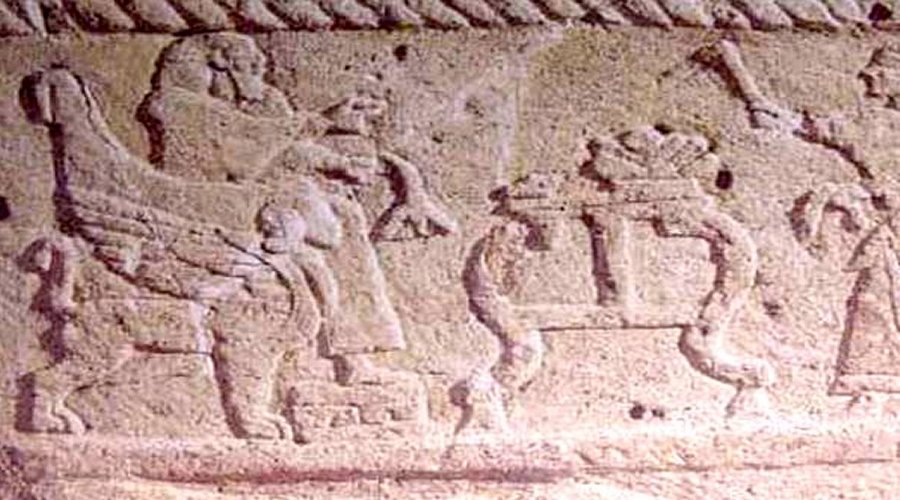 Bas relief is from his sarcophagus. The Cherubim have been identified as Winged Sphinxes (p. 127. Sabatino Moscati. The Phoenicians. Gruppo Editoriale Fabbri Bompiani, Sonzono, Etas S.p.A. Milan. March 1988
Bas relief is from his sarcophagus. The Cherubim have been identified as Winged Sphinxes (p. 127. Sabatino Moscati. The Phoenicians. Gruppo Editoriale Fabbri Bompiani, Sonzono, Etas S.p.A. Milan. March 1988
Byblos was also the first city to perfect shipbuilding, and it is primarily due to the craftsmanship of the shipwrights of the town that Phoenicians acquired their fame as sailors and "princes of the sea" (as they are referred to in the biblical book of Ezekiel).
It was also when the most significant powers of the ancient New East, such as the Hittites, Babylon, and Egypt, dominated the region. They divided smaller kingdoms amongst themselves. Byblos and most of Phoenicia fell under Egyptian control.
Archaeological evidence shows that ancient Byblos was a walled city with both a land and a sea gateway during Egyptian domination. Byblos' planning was relatively advanced for the time.
Byblos streets were built concentrically to the town center, and canals carried rain and drainage water away. Many funerary offerings indicate that the inhabitants of Byblos prospered financially and materially despite their subordination to Egypt.
Historians believe that it was possible mainly due to trade with the Egyptians. Egypt delivered gold, papyrus, alabaster, and linen to Phoenicia. The Phoenicians had cedar and other wood for shipbuilding, tomb construction, and funerary ritual, which the Old Kingdom's pharaohs needed.
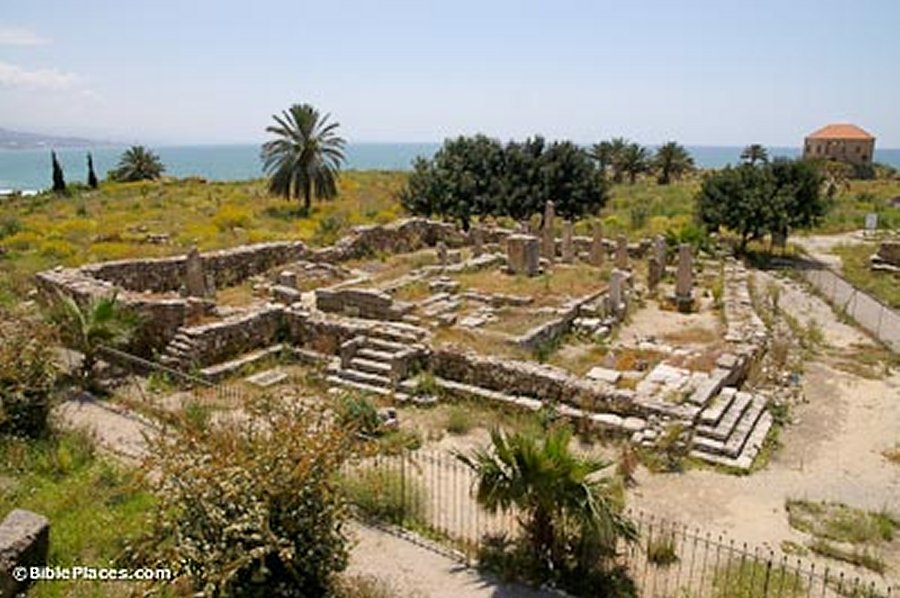 The Obelisk temple is named after the nearly 30 obelisks discovered standing in the temple’s courtyard.
The Obelisk temple is named after the nearly 30 obelisks discovered standing in the temple’s courtyard.
The Phoenicians then developed their alphabet of 22 characters, which replaced cuneiform in written communication. Through trade routes, the Phoenician alphabet traveled first to Greece around 800 BC and then spread to other countries through Greek merchants.
Between 1100 and 725 BC, Byblos declined in importance, but later it began to prosper again.
This city has a turbulent history of at least 6,000 years, full of interactions with various cultures, which left the Bronze Age's monumental temples, the Persian fortifications, the Roman road, Byzantine churches, the Crusade citadel, and the Medieval and Ottoman town.
Under Arab rule beginning in 637 AD, Byblos started to decline in wealth and importance. The great port was virtually ignored for centuries; thus, the city became an easy target for invading Crusaders in 1098 AD. Once the Crusaders left, the Muslim rulers neglected the town until it was utterly forgotten for centuries.
In 1860 AD, thanks to the French historian Ernest Renan, the ancient site was rediscovered, and continuous excavations took place between 1925 and 1975.
This city has a turbulent history of at least 6,000 years, full of interactions with various cultures, which left the Bronze Age's monumental temples, the Persian fortifications, the Roman road, Byzantine churches, the Crusade citadel, and the Medieval and Ottoman town.
Under Arab rule beginning in 637 AD, Byblos started to decline in wealth and importance. The great port was virtually ignored for centuries; thus, the city became an easy target for invading Crusaders in 1098 AD. Once the Crusaders were driven out, the Muslim rulers neglected the town until it was forgotten for centuries.
In 1860 AD, thanks to the French historian Ernest Renan, the ancient site was rediscovered, and continuous excavations were organized from 1925 to 1975.
Written by – A. Sutherland AncientPages.com Staff Writer
Updated on December 30, 2023
Copyright © AncientPages.com All rights reserved. This material may not be published, broadcast, rewritten or redistributed in whole or part without the express written permission of AncientPages.com
Expand for referencesReferences:
M. De Lafayette, Phoenicia, Ur, and Carthage: Artifacts, Inscriptions, Slabs, Sites
Bob E.J.H. Becking, L. Grabbe, Between Evidence and Ideology
More From Ancient Pages
-
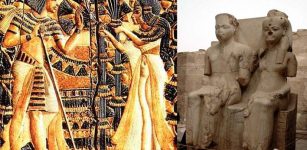 Ankhesenamun – Mysterious Death Of Tutankhamun’s Wife Ended The True Amarna Bloodline
Featured Stories | Mar 23, 2018
Ankhesenamun – Mysterious Death Of Tutankhamun’s Wife Ended The True Amarna Bloodline
Featured Stories | Mar 23, 2018 -
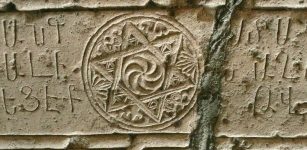 Ancient Iconic Armenian Wheel Of Eternity Depicted Inside A Six Pointed Star
Ancient Symbols | Feb 27, 2017
Ancient Iconic Armenian Wheel Of Eternity Depicted Inside A Six Pointed Star
Ancient Symbols | Feb 27, 2017 -
 Impact Of European Contact With Pacific Islands Was Devastating – New Study Reveals
Archaeology | Sep 30, 2022
Impact Of European Contact With Pacific Islands Was Devastating – New Study Reveals
Archaeology | Sep 30, 2022 -
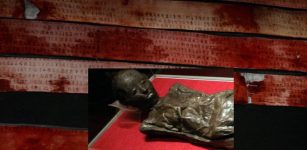 ‘Liber Linteus’ – Unique History Of Ancient ‘Linen Book’ Written In Etruscan That Still Remains Poorly Understood
Artifacts | Oct 21, 2019
‘Liber Linteus’ – Unique History Of Ancient ‘Linen Book’ Written In Etruscan That Still Remains Poorly Understood
Artifacts | Oct 21, 2019 -
 Mystery Of The Brave Viking Chief Buried On The Gokstad Ship
Featured Stories | Mar 14, 2016
Mystery Of The Brave Viking Chief Buried On The Gokstad Ship
Featured Stories | Mar 14, 2016 -
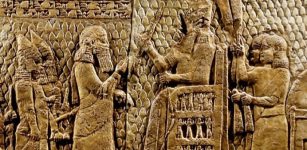 Lost Kingdom Of Idu And Its Seven Unknown Kings
Civilizations | Jul 25, 2023
Lost Kingdom Of Idu And Its Seven Unknown Kings
Civilizations | Jul 25, 2023 -
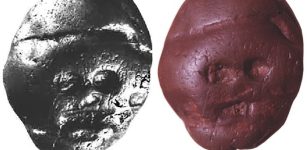 Why Are Manuports Like The Makapansgat Cobble Interesting Archaeological Artifacts?
Artifacts | Mar 15, 2024
Why Are Manuports Like The Makapansgat Cobble Interesting Archaeological Artifacts?
Artifacts | Mar 15, 2024 -
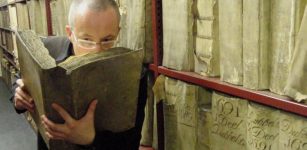 Odeuropa – Unusual Project Will Recreate The Smells Of Old Europe And Store The Scents In A Library
News | Nov 17, 2020
Odeuropa – Unusual Project Will Recreate The Smells Of Old Europe And Store The Scents In A Library
News | Nov 17, 2020 -
 Antediluvian Artifact Discovered In Egyptian Tomb May Solve The Great Pyramid Mystery?
Featured Stories | May 3, 2018
Antediluvian Artifact Discovered In Egyptian Tomb May Solve The Great Pyramid Mystery?
Featured Stories | May 3, 2018 -
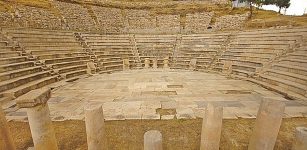 Cult Of Zeus Discovered In The Ancient City Of Metropolis
Archaeology | Dec 21, 2015
Cult Of Zeus Discovered In The Ancient City Of Metropolis
Archaeology | Dec 21, 2015 -
 30 Ancient Skeletons May Finally Unravel The Secrets Of The Dead Sea Scrolls
Archaeology | Nov 23, 2017
30 Ancient Skeletons May Finally Unravel The Secrets Of The Dead Sea Scrolls
Archaeology | Nov 23, 2017 -
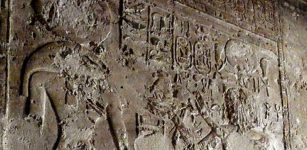 Pakhet ‘Night Huntress’: Egyptian War-Like Lioness Goddess Associated With Artemis
Egyptian Mythology | Mar 4, 2019
Pakhet ‘Night Huntress’: Egyptian War-Like Lioness Goddess Associated With Artemis
Egyptian Mythology | Mar 4, 2019 -
 Legend Of The Four Dragons That Disobeyed The Jade Emperor And Gave China Water
Chinese Mythology | Feb 22, 2019
Legend Of The Four Dragons That Disobeyed The Jade Emperor And Gave China Water
Chinese Mythology | Feb 22, 2019 -
 Graves Of Celtic Princes Reveal How Powerful Women Were In Pre-Roman Germany
Archaeology | Jun 4, 2024
Graves Of Celtic Princes Reveal How Powerful Women Were In Pre-Roman Germany
Archaeology | Jun 4, 2024 -
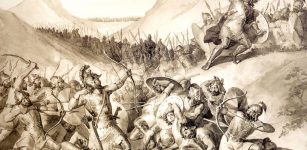 Armenia: Old Land Where Myths, Legends And Long History Meet
Civilizations | Apr 20, 2016
Armenia: Old Land Where Myths, Legends And Long History Meet
Civilizations | Apr 20, 2016 -
 Lady Of Drunkenness And How God Ra Wanted To Teach Humans A Lesson
Egyptian Mythology | Jun 20, 2019
Lady Of Drunkenness And How God Ra Wanted To Teach Humans A Lesson
Egyptian Mythology | Jun 20, 2019 -
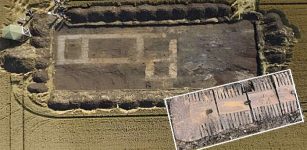 Lincolnshire’s Prehistoric Henge And A Sacred Site Dating Back Hundreds Of Years
Archaeology | Apr 6, 2024
Lincolnshire’s Prehistoric Henge And A Sacred Site Dating Back Hundreds Of Years
Archaeology | Apr 6, 2024 -
 New Light On Prehistoric Chalk Plaques From Stonehenge Using Innovative Technology
Archaeology | Nov 3, 2021
New Light On Prehistoric Chalk Plaques From Stonehenge Using Innovative Technology
Archaeology | Nov 3, 2021 -
 Why Is Caganer, The Pooping Man Part Of The Catalonian Christmas Tradition And Nativity Scene?
Christmas Traditions | Dec 18, 2024
Why Is Caganer, The Pooping Man Part Of The Catalonian Christmas Tradition And Nativity Scene?
Christmas Traditions | Dec 18, 2024 -
 On This Day In History: The Battle of Blore Heath – Sep 23, 1459
News | Sep 23, 2015
On This Day In History: The Battle of Blore Heath – Sep 23, 1459
News | Sep 23, 2015

